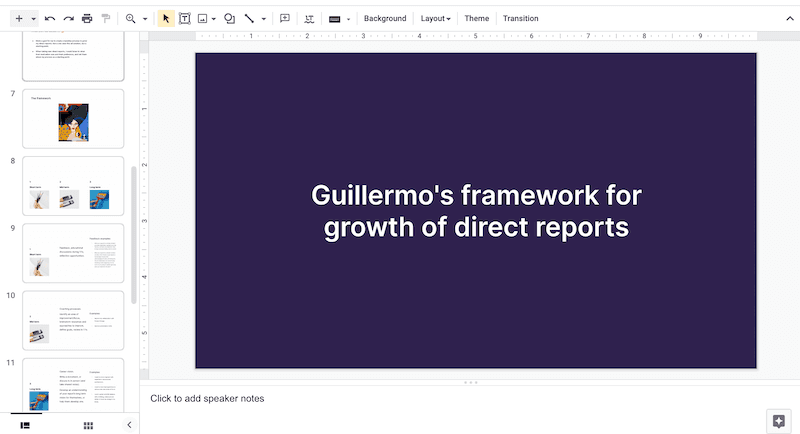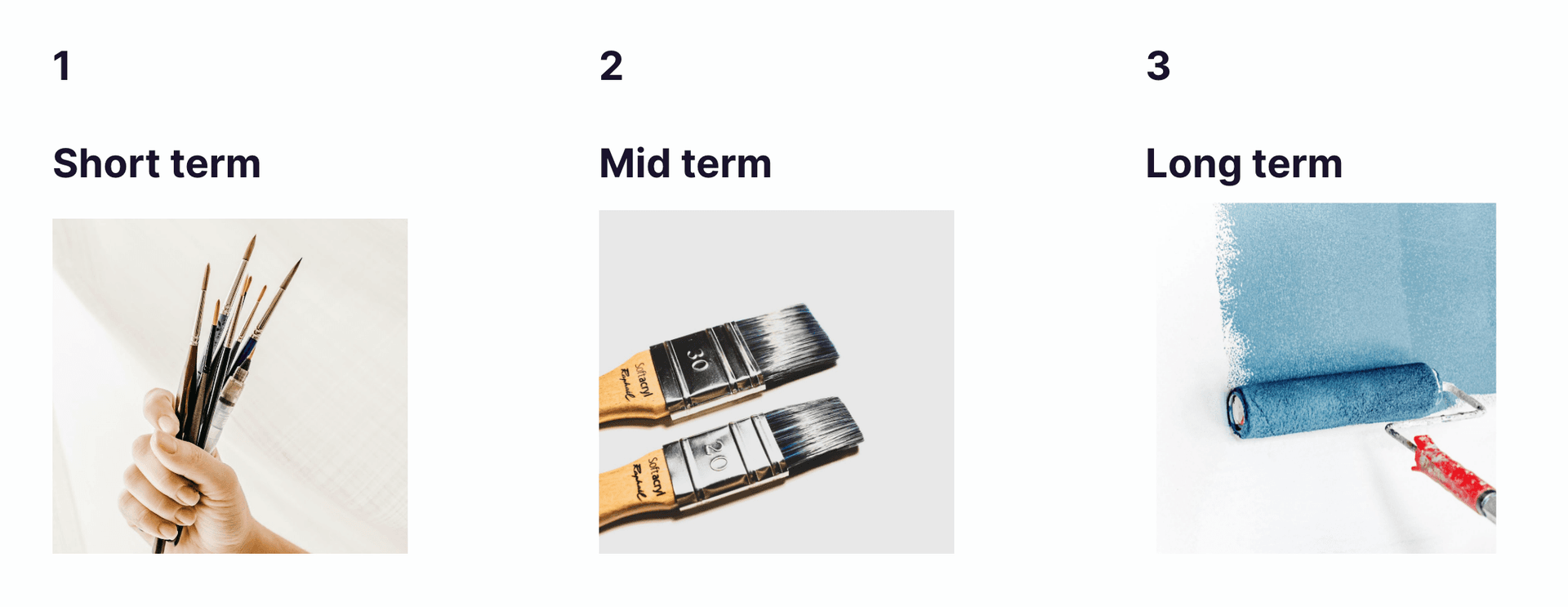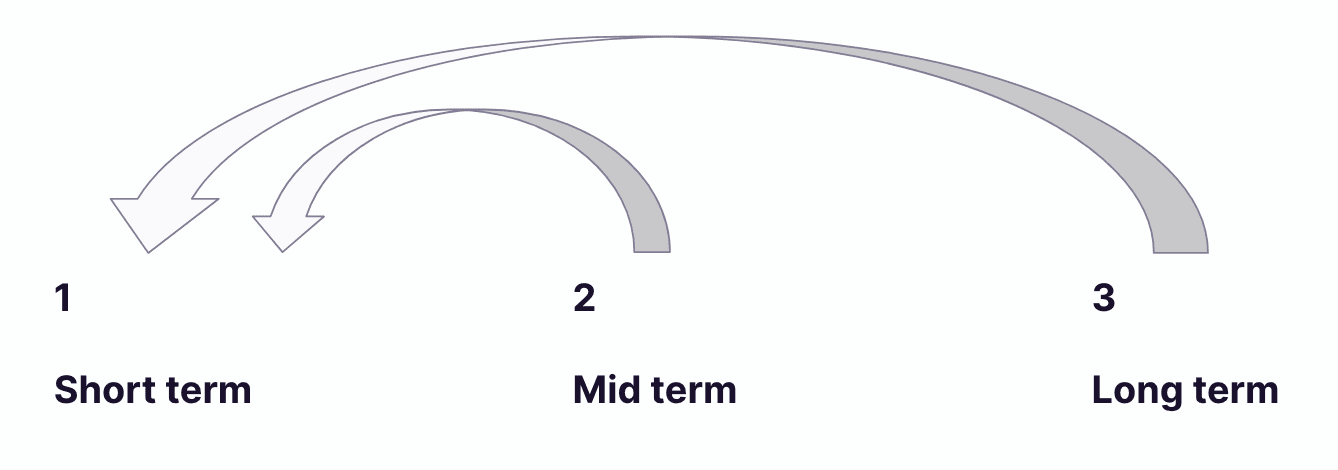Growth Framework for Direct Reports
Management
This is an adaptation of a 15-minute presentation I gave at Splash’s monthly Management Lunch & Learn.

I’ve learned some lessons in the topic of growth of direct reports. I’m not an expert, but I feel confident enough to share my thoughts on this topic.
Personal and professional growth feel to me like painting a living self-portrait. From broad strokes to small details, one evolves the composition over time with new learnings, experiences, interests, and goals. That’s why I chose the analogy of painting.

What Is Growth?
Growth can have many meanings for a person and their organization:
Development of skills
Acquisition of new knowledge
Preparation for new responsibilities and opportunities
Increase of value as a professional (compensation, recognition, promotions)
Development of self-awareness about one’s career
Why Does It Matter?
Organizations with ambitious business goals need their team members to be better equipped to solve problems.
Many team members want to see progress in their growth, in their professional trajectory. It can be a source of demotivation when missing, and a source of motivation when present.
My Story as a Manager of Direct Reports 🙋🏻
I started my manager path VERY motivated by helping other team members grow in their careers. At the time, this was beyond fulfilling for me. In my first management years, I put a lot of work into it. I spent ridiculous amounts of hours listening to podcasts, reading books, preparing feedback, crafting deep performance reviews…
However, over time, my focus shifted to team performance and results. I accidentally left on the side the priority of coaching and growing direct reports.
A year later, upwards feedback helped me identify what I had left behind. I had been too tactical and focused on immediate feedback, not on the big picture. Also, I learned that some reports expected me to actively help them grow, because they didn’t know how to do it themselves or in which direction to go. In reality, they needed me to be a supportive coaching manager, and I hadn’t been.
How Did I Improve At Direct Report Growth Management?
I made a goal for myself to define a baseline framework to manage growth of my direct reports. Not a one-size-fits-all solution, but a starting point.
The Framework

1. Short Term

Consists of feedback, educational discussions, reflection opportunities, etc. Short, frequent, and inexpensive to deliver. Like fine strokes to add detail and polish rough edges.
2. Mid Term

Coaching for growth areas. A bit more broad, but still tangible. We identify an area of improvement/focus, brainstorm resources, and define goals. Then on every other 1:1, we revisit the growth area.
Examples:
Improve my collaboration with Product Design.
Improve presentation skills.
3. Long Term

This is the career vision. Some people prefer to write it in a shared document, others to talk about it. Regardless of the format, my goal is to develop a shared understanding of their long term vision. If they don’t have one, I can coach them to define it, if they want.
Examples:
I want to be an engineer with expertise in microservice architecture.
I want a great work/life balance, with a fulfilling, stable job and ability to focus my energy in my family.
Feedback Loop

Defining areas of growth and a career vision informs short term opportunities and areas of focus on the feedback. This is very helpful to make feedback more meaningful, and also tie it with something they care about.
A Rule For Direct Reports: Growth Is Your Responsibility
The rule I share with them is Your growth is your responsibility, not your manager’s. While that might not be entirely true, I think it fosters empowerment and autonomy.
I tell them that regarding their growth, it’s my job to:
Retain them.
Grow them in the way the business needs.
Treat them fairly and with equal opportunity.
You can hold me accountable for supporting you, giving you pointed feedback, having growth conversations, mentoring you on the things I know, discussing your career path, and identifying opportunities that align with your goals. But not for figuring out your career path for you, nor be the only source of opportunities that align with your goals.
So How Is This Working Out?

What I’ve seen so far is:
The initial reception is good. Direct reports like the amount of thought I’ve put into this.
Not everybody wants to define a long term vision, that’s okay.
Not everybody comes up of growth areas. In that case, I offer growth areas based on what I think would maximize their opportunities and outcomes.
So I’m quite happy with these results of my own growth area! But it’s a work in progress, so this story will continue…

All photographs, in order of appearance:
Photo by Raghav Modi on Unsplash
Photo by Jonathan Borba on Unsplash
Photo by Pedro Barros on Unsplash
Photo by Theme Photos on Unsplash
Photo by Alice Dietrich on Unsplash
Photo by Reuben Juarez on Unsplash